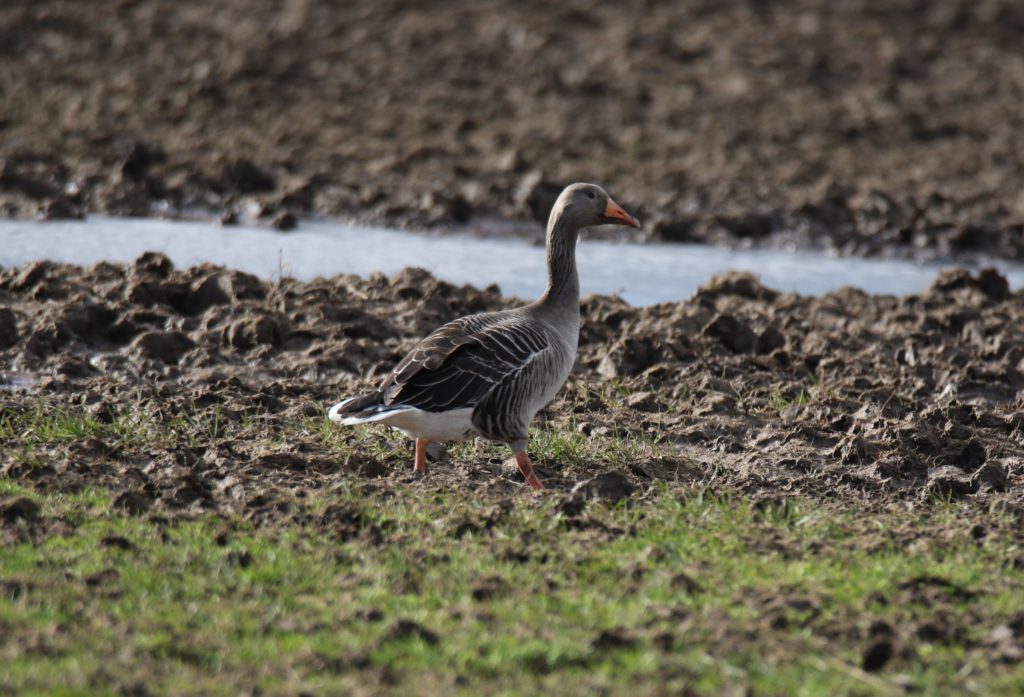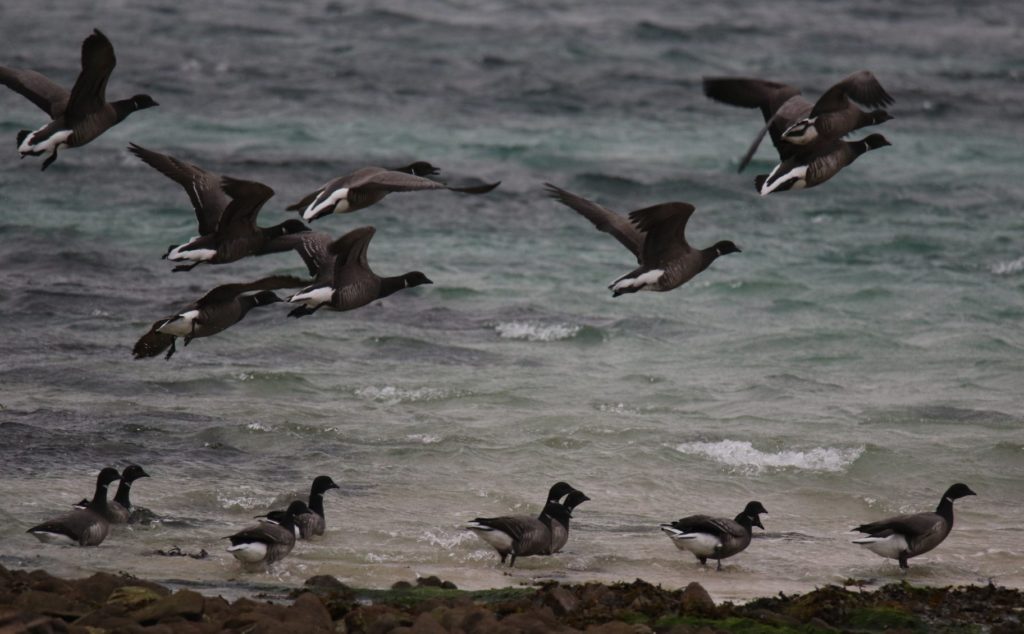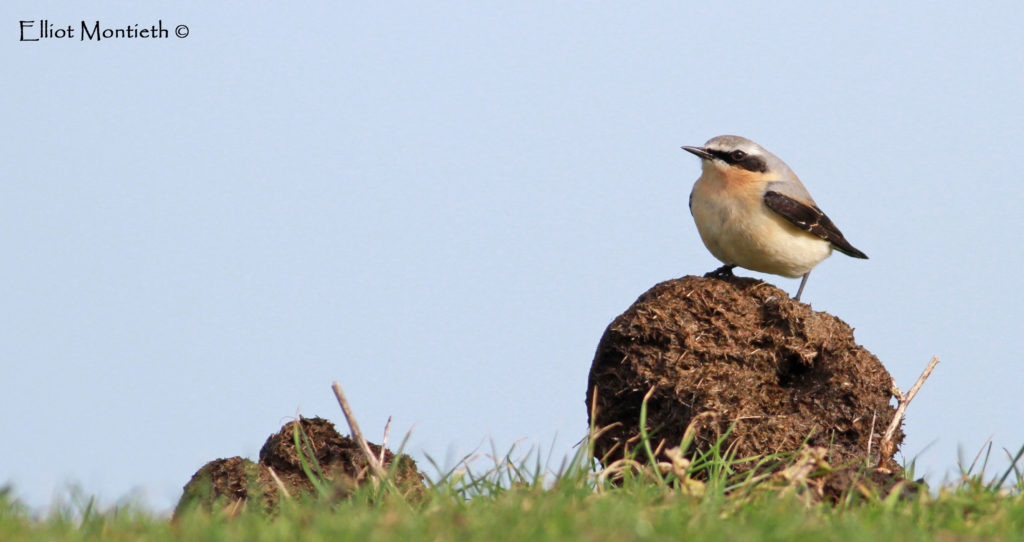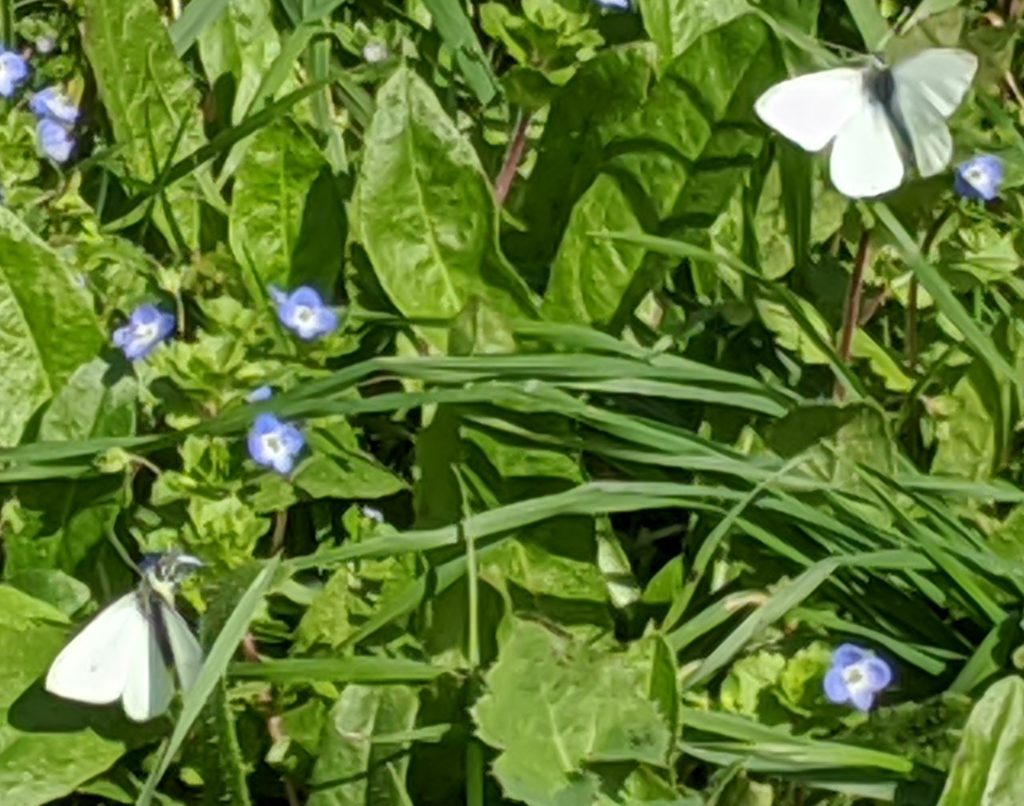Though we are recording birds at every opportunity, the official 2020 Alderney bird observatory census begins 1st March focusing on the designated ABO recording area. Effectively the entire north-east end of the island is checked every day, on average the census takes 3 to 4 hours to complete. Our spring census continues until mid May, then after a few weeks break the autumn daily census starts early July and continues right through to November. All 20 of the accredited British bird observatories complete this research resulting in one of Europe’s most comprehensive and long standing databases recording bird migration.

A single Greylag Goose was at Kiln Farm, the origins of these birds are always questioned as many are feral. This bird appeared very weary and easily spooked as it flew off immediately when a farm tractor entered the field some 200 meters away, at the same time large numbers of Gulls and Crows barely batted an eye-lid at the approaching farmer, there were no further sightings. A fine gaggle of 35 Dark bellied Brent Geese were in Longis Bay on the afternoon of the 5th. The single Shelduck that arrived 28th Feb was joined by a 2nd male on the 3rd Mar, both had departed by the 7th, a drake Teal was on Corbletts quarry (8th). A Black throated Diver was on the sea just off Fort Razz on the 5th, the Great Northern Diver present in Braye bay since the 17th Feb was last seen on the 2nd Mar.

Greylag Goose – Kiln Farm – Photo JH

Dark-bellied Brent Geese – Longis Bay – photo JH
On the 29th a Catte Egret was reported seen flying west up the island over arrackmasters lane, it was soon relocated at Kiln Farm from where it again flew west towards dusk. Water rail has been recorded daily with at least 4 birds present at Longis pond and 2 at Mannez quarry pond.

Western Cattle Egret – Kiln Farm – Photo JH
A single Redshank (uncommon here) was on flooded fields at Kiln farm on the 5th and Turnstone numbers peaked at 14 the same day. Whimbrels are passing through the island, 5 along the north east coast line on the 3rd the high count so far. An adult Yellow legged Gull was amongst a flock of Lesser black backed Gulls sheltering from high winds at Whitegates field on the 5th. A female Kingfisher was on Corbeltts quarry (1st ). A Water Pipit was found in Longis Bay on the 7th, present at the same spot the following day. 43 White, and 19 Pied Wagtails were recorded on the 3rd. Our first 3 Sand Martins were on the 7th. Late arriving this spring was first confirmed Northern Wheatear in the Channel Islands for this year (and only the 2nd confirmed Wheatear in the British Isles in 2020) was at Whitegates fields on the 8th. Some 31 Stonechats were seen in the Obs recording area on the 3rd. A single and vocal Fieldfare was spotted close to the lighthouse on the 6th and a Cetti’s warbler remains at Longis reserve. 2 Dartford Warblers were seen on the south cliffs path the Firecrest high count so far was 9 individuals on the 3rd. Our bird ringing got off to a good start with 2 UK ringed chiffchaffs amongst our first 20 processed.

Water Pipit – Longis Bay – Photo JH

Northern Wheatear (male) – Whitegates fields – Photo EM

Firecrest – Essex Farm – Photo – EM
Two Small White Butterflies feeding close to the observatory were confirmed by the British Butterfly Conservation Trust as the first records in the British Isles for 2020! These delicate insects are usually recorded from early May so this really is an exceptional record. A further excellent butterfly record was of a Large Tortoiseshell at Houme Herbe on the 3rd. The stormy seas have encouraged our Grey seals to seek sheltered bays, up to 4 seals frequenting cats bay included an enormous Bull Grey Seal on the 2nd.

Small White Butterfly x2 – The Nunnery – photo JH
